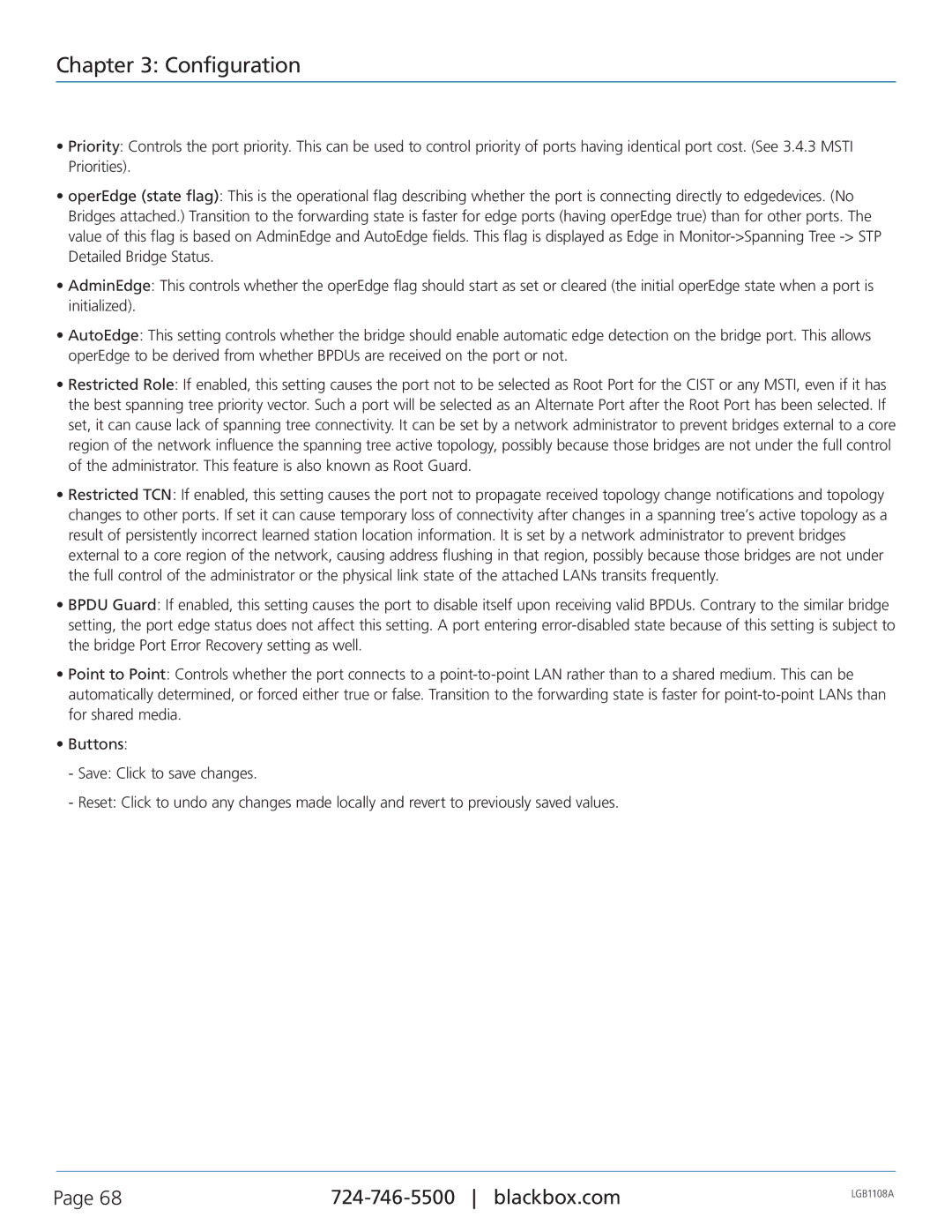
Chapter 3: Configuration
•Priority: Controls the port priority. This can be used to control priority of ports having identical port cost. (See 3.4.3 MSTI Priorities).
•operEdge (state flag): This is the operational flag describing whether the port is connecting directly to edgedevices. (No Bridges attached.) Transition to the forwarding state is faster for edge ports (having operEdge true) than for other ports. The value of this flag is based on AdminEdge and AutoEdge fields. This flag is displayed as Edge in
•AdminEdge: This controls whether the operEdge flag should start as set or cleared (the initial operEdge state when a port is initialized).
•AutoEdge: This setting controls whether the bridge should enable automatic edge detection on the bridge port. This allows operEdge to be derived from whether BPDUs are received on the port or not.
•Restricted Role: If enabled, this setting causes the port not to be selected as Root Port for the CIST or any MSTI, even if it has the best spanning tree priority vector. Such a port will be selected as an Alternate Port after the Root Port has been selected. If set, it can cause lack of spanning tree connectivity. It can be set by a network administrator to prevent bridges external to a core region of the network influence the spanning tree active topology, possibly because those bridges are not under the full control of the administrator. This feature is also known as Root Guard.
•Restricted TCN: If enabled, this setting causes the port not to propagate received topology change notifications and topology changes to other ports. If set it can cause temporary loss of connectivity after changes in a spanning tree’s active topology as a result of persistently incorrect learned station location information. It is set by a network administrator to prevent bridges external to a core region of the network, causing address flushing in that region, possibly because those bridges are not under the full control of the administrator or the physical link state of the attached LANs transits frequently.
•BPDU Guard: If enabled, this setting causes the port to disable itself upon receiving valid BPDUs. Contrary to the similar bridge setting, the port edge status does not affect this setting. A port entering
•Point to Point: Controls whether the port connects to a
•Buttons:
-Save: Click to save changes.
-Reset: Click to undo any changes made locally and revert to previously saved values.
Page 68 | LGB1108A | |
|
|
